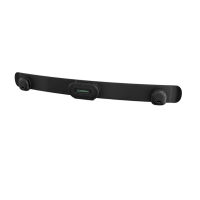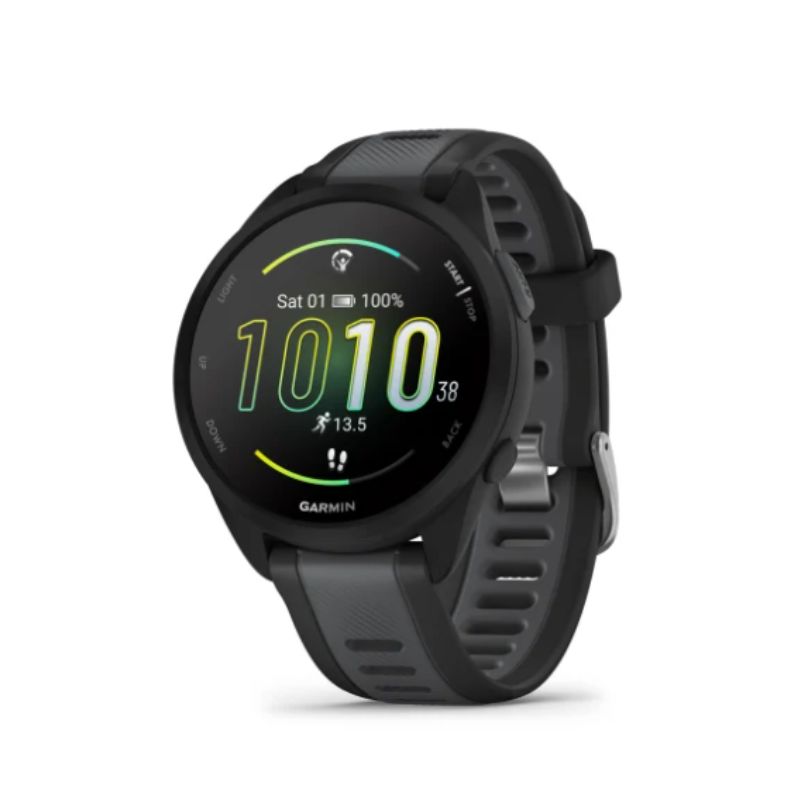Garmin HRM-Fit review: The comfortable new way to track your workouts
Health Writer Ciara McGinley takes the Garmin HRM-Fit out for a spin - but could it be the new way to monitor your fitness as the perfect tracker alternative?
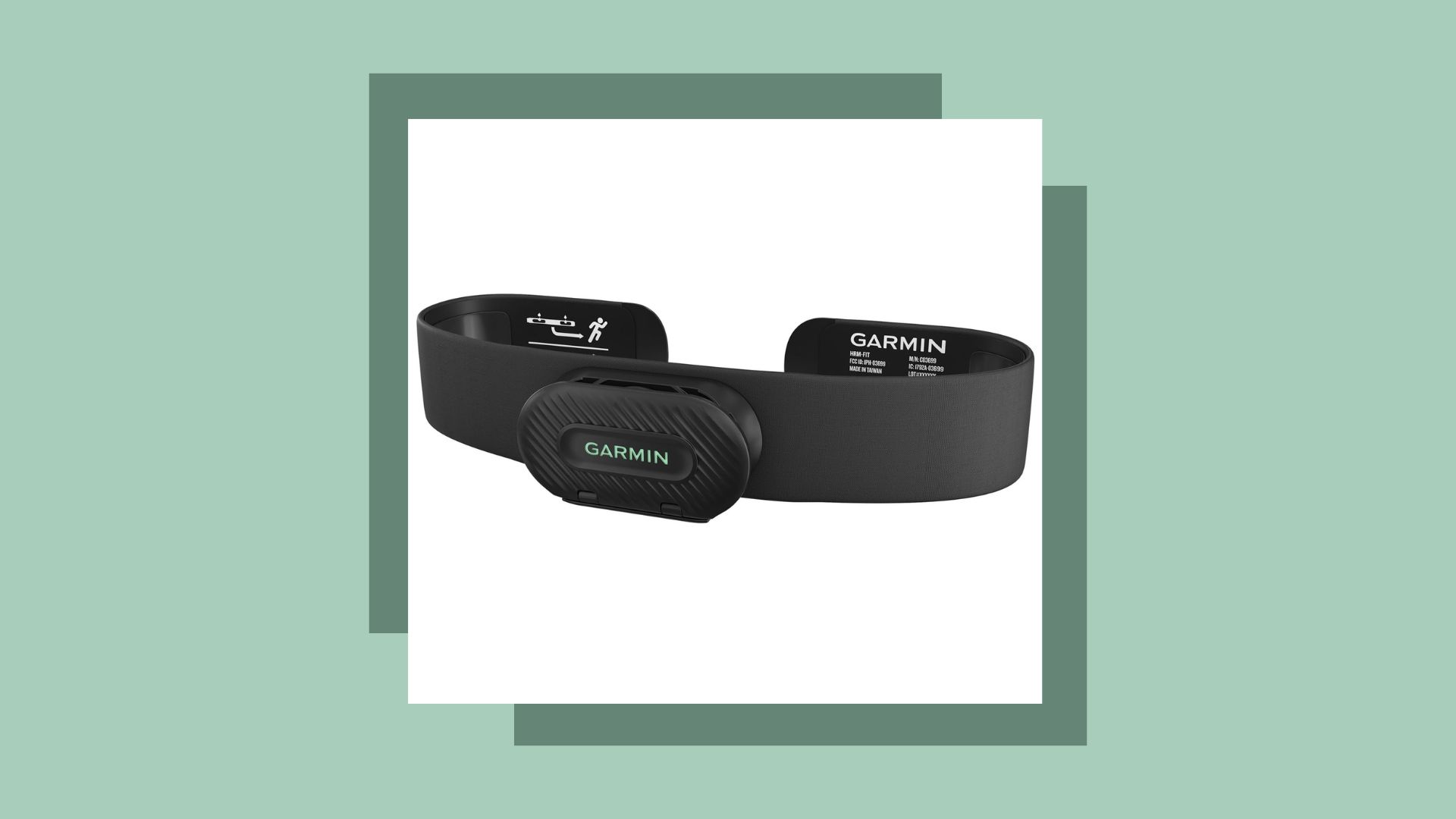
For out-of-sight, out-of-mind fitness tracking, the Garmin HRM-Fit is a perfect pick
-
+
More accurate heart rate monitoring
-
+
More comfortable than traditional chest strap monitors
-
+
Connects with Garmin smartwatches and exercise equipment
-
-
Not rechargeable
-
-
Limited use
Why you can trust Woman & Home

Garmin’s latest heart rate monitor has been purpose-built for women, with more accurate heart rate data and a comfortable fit in mind. But, is it worth the investment? Let’s find out.
If you're in the market for one of the best fitness trackers but if you're asking 'which Garmin should I buy' and the array of watches aren't for you, you'll want to know about Garmin's latest model. The HRM-Fit is designed to fit comfortably and securely onto the band of your sports bra, offering an option out of sight and out of mind.
After testing many devices over the past few months, I had a lot of expectations of the Garmin HRM-Fit. Of course, this heart rate monitor doesn’t come with all the bells and whistles that smartwatches and fitness trackers do - and standalone heart rate monitors aren’t for everyone - but if you are interested in trying a different approach to tracking your workouts, it could be for you.
Garmin HRM-Fit review
Garmin HRM-Fit review: Overview
The HRM-Fit is the latest heart rate monitor in Garmin’s lineup. However, this one has been specifically created for women and those who wear sports bras - a rarity in the industry. Flipping the traditional design of a chest-strap heart rate tracker on its head, the HRM-Fit has been designed to fit comfortably and securely onto a sports bra while capturing important metrics such as real-time heart rate, steps, intensity levels, and more.
While the HRM-Fit offers accurate heart rate data and more, it can’t compete with the smartwatches in the range such as the Garmin Venu 3S or Garmin Forerunner 165, or other fitness trackers and devices such as the newest Apple Watch, the Apple Watch Series 9, or the Oura Ring. But, it’s not supposed to either. Instead, the HRM-Fit is designed to deliver more accurate heart rate data, whether running, cycling, rowing or doing a HIIT workout. It can connect to fitness equipment to give you real-time insights and for runners, it can connect to a compatible Garmin smartwatch and help to improve your running technique.
If the most accurate heart rate data is important to you, or you are training for a race, investing in a heart rate monitor may be worth it. However, if you already have a smartwatch or fitness tracker that does this, the HRM-Fit may not be necessary for you.
Garmin HRM-Fit: £139.99 at Garmin
The Garmin HRM-Fit clips directly onto medium to high-intensity sports bras with a comfortable fit and can capture data from all kinds of workouts, from running and cycling to HIIT and strength training.
Specifications
- Price: £139.99
- Size: 33.5 x 3.3 x 1.7 cm
- Weight: 53g
- Battery type: CR2032
- Battery life: Up to 1 year
- Fit: Clips onto sports bra
Garmin HRM-Fit: Design
When I opened the box of the Garmin HRM-Fit I was surprised to find a short, small and compact strap inside - rather than a traditional chest strap, which tends to wrap the whole way around the chest and back. The HRM-Fit has been specifically designed to clip onto the front of a sports bra for more comfort and better accuracy.
The strap is just under 34 cm long with two sensors on either side of the inside of the band, and three clips on the outer side of the band to easily attach it to your sports bra. Garmin recommends wetting the sensors inside the band before use and going through the set-up in the app once you’re wearing the device.
It’s super easy to attach the device to your sports bra. However, Garmin points out the device should be used with medium-to-high support sports bras. so there isn’t too much movement in the chest area when you work out, and so the device can remain flat against the underband of your sports bra, touching your skin.
I found the strap itself really comfortable to wear, with no chafing or irritation to my skin as I worked out. I didn’t find the clips bulky or uncomfortable under clothing either - although, I tend to wear loose-fitting gym tops. You can't attach it properly to a sports bra with a zip closure at the front though, so that's worth noting.
What's it like to use the Garmin HRM-Fit?
Getting to grips with the Garmin HRM-Fit was pretty easy once I watched a few set-up videos on the brand’s YouTube channel. I quickly realised I had to wear the device to connect it, so I clipped it onto my sports bra, ensuring it was as flat and secure as possible. I then moved on to the set-up via the free Garmin Connect app, while also connecting with my Garmin Venu 3S and Hydrow machine, so I could see my heart rate in real-time as I worked out.
At first, I tried the HRM-Fit with a low-impact sports bra but I found it moved and bunched up underneath the band. After changing into a medium-support sports bra, the strap felt comfortable against my skin and it didn’t move. In fact, I hardly noticed it as I worked out. If you're looking for a new sports bra, it's worth checking out one of the best sports bras for your chosen workout.
One potential downside to the Garmin HRM-Fit is that it isn’t rechargeable. It uses a coin cell battery that has up to a year of battery life, based on one hour of use per day. Once it runs out you can unlock the battery compartment to replace it.
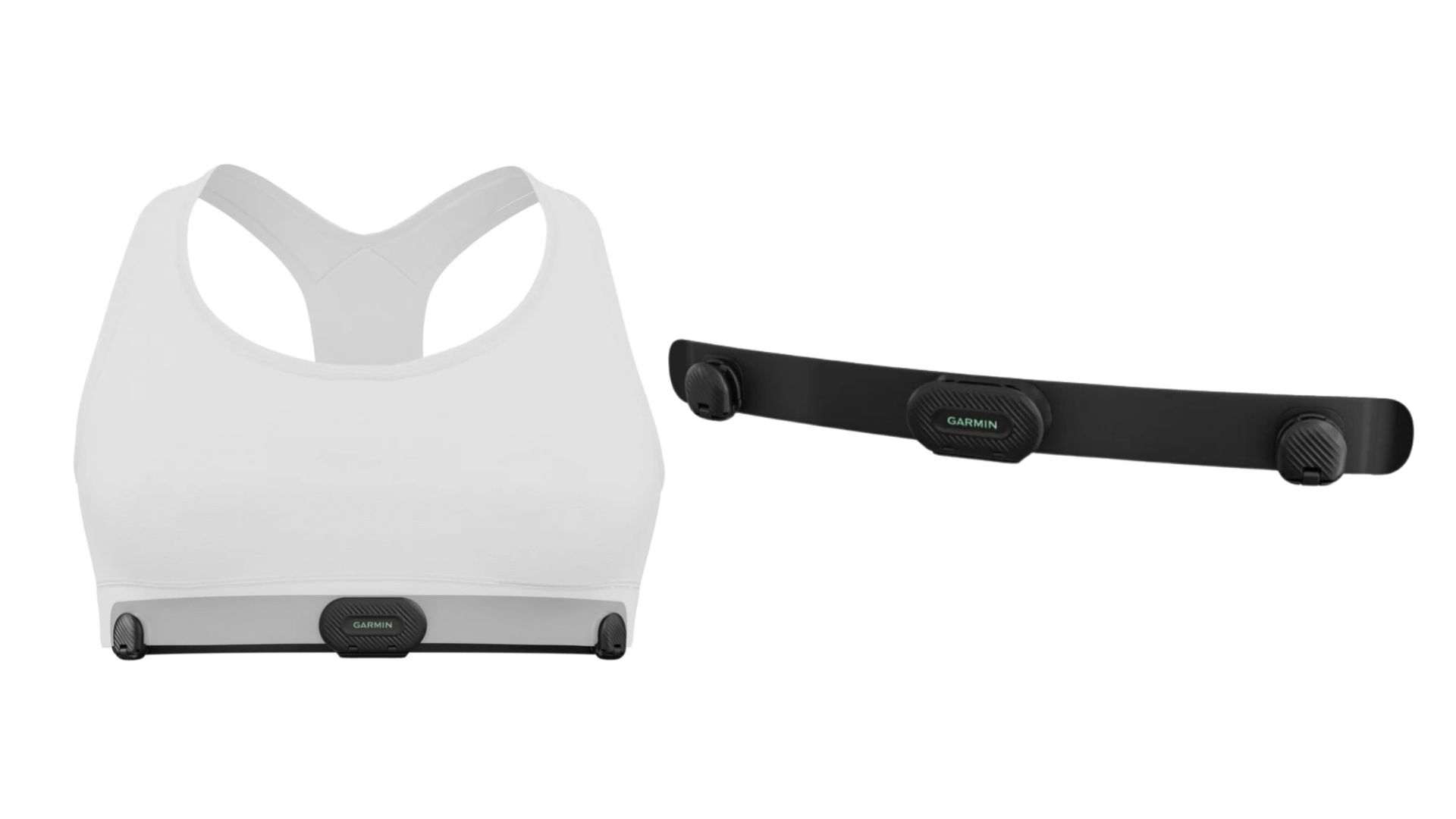
The Garmin HRM-Fit is worn on the underband of a medium or high-intensity sports bra.
Fitness tracking on the Garmin HRM-Fit
The Garmin HRM-Fit supports fitness tracking in a variety of ways. Firstly, regardless of whether or not you connect it to a Garmin smartwatch, you can link it to exercise equipment, such as a Peloton treadmill, and get on-screen, real-time heart rate insights. Other fitness trackers, like the Fitbit Charge 6, have this feature as well.
Perhaps what's most impressive about this device is that it's so much more than a heart rate monitor. While other monitors from Garmin like this nearly always need to be connected to a smartwatch, the HRM-Fit can calculate steps, calories burnt, and intensity minutes when you're not wearing a watch. It sends this data back to the Garmin Connect app - so you need your phone when you wear it, but you don't need a fitness tracker on your wrist.
I didn’t have the opportunity to try this while running indoors on a treadmill but Garmin says it can also collect data on pace and distance, and send this back to your watch and app. Plus, if you wear it paired with an advanced Garmin smartwatch, such as the Forerunner 945, it can capture running dynamics such as vertical oscillation, ground contact time, balance, stride length, and more.
The HRM-Fit doesn’t have its own heart rate zones - it sends data to the device it’s connected to instead, whether that’s a treadmill or your smartwatch, and heart rate zones are determined by these devices.
Can you use the Garmin HRM-Fit without a watch?
Yes, you can still use the HRM-Fit without a Garmin smartwatch. However, the data you collect will be limited. If you don’t have a watch but connect it to fitness equipment, you’ll be limited to the data that equipment can collect.
For example, if you connect your HRM-Fit to the Hydrow machine, you will see your real-time heart rate data and the metrics the Hydrow already offers, such as distance and calorie burn during your workout. When connected to your Garmin smartwatch, you’ll also see all this and more, including how it impacts your overall daily calorie burn, stress levels and recovery time.
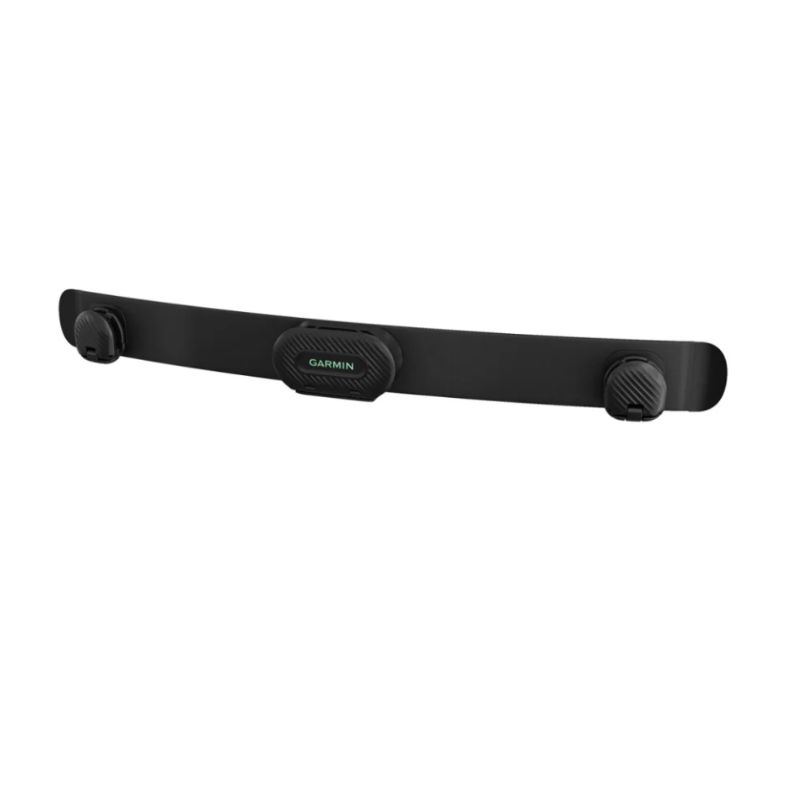
The Garmin HRM-Fit pairs with a variety of basic and advanced Garmin trackers to help you get the most from your data. Although, you can also use the heart rate monitor on its own to record your workouts and get insights into your training.
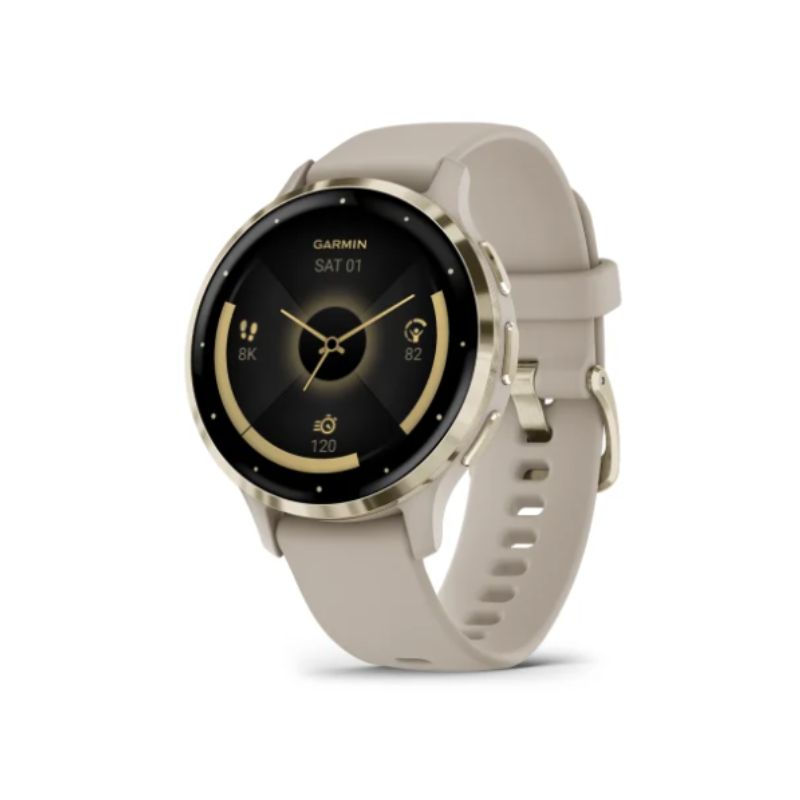
As tried and tested by health writer Ciara McGinley, the Venu 3S is one such tracker that pairs well with the HRM-Fit. Together, you can track advanced workout statistics during both indoor and outdoor workouts. It can also be worn on its own as a lifestyle feature to track steps and record your heart rate day-to-day.
Is the Garmin HRM-Fit worth buying?
As with any fitness tracker or wearable, it all comes down to your personal preference and needs. If you're looking to monitor workout metrics without a wrist or finger-worn tracker, this is a good device to have as you can get good basic metrics without connecting it to your Garmin device.
Equally, if you are training for a fitness challenge or need the most accurate heart rate data possible during workouts, I think it's worth the investment. As well as providing accuracy, it also delivers on comfort and it's much easier to wear than the restrictive chest straps I’ve tried previously.
If you mainly work out using fitness equipment such as a treadmill, rowing machine or spin bike, and you want a device that can track your heart rate as you exercise, it might also be a worthwhile investment. It's also more affordable than a fitness tracker or smartwatch with all the bells and whistles. The HRM-Fit costs £139.99, whereas Garmin smartwatches start at around £250.
However, if you want an overall insight into your workouts, I would suggest just buying a fitness tracker or smartwatch - like one of the best Fitbits or a basic Garmin device. For example, you can buy the Fitbit Inspire 3, one of the newest Fitbits, for £84 from Amazon. This will deliver the same basic insights into your heart rate tracking, calorie burn, and step count - and monitor your sleep and stress levels - but it is a wrist-worn device.
Sign up for the woman&home newsletter
Sign up to our free daily email for the latest royal and entertainment news, interesting opinion, expert advice on styling and beauty trends, and no-nonsense guides to the health and wellness questions you want answered.
Ciara McGinley is a meditation practitioner and health journalist. She qualified as a meditation teacher with the British School of Meditation in 2020 and is the founder of Finding Quiet, a series of classes, workshops and retreats that combine meditation practices and mindfulness techniques to make mindful living realistic in an always-switched-on modern world. She is all about bettering that mind-body connection but believes wellness looks different to everyone.
Ciara is also the former Health Channel Editor at woman&home and has covered all things health and wellbeing for years, from fitness to sleep to relationships.
-
 Need spring style inspiration? Jennifer Aniston proves a shirt dress is the most versatile item you can invest in
Need spring style inspiration? Jennifer Aniston proves a shirt dress is the most versatile item you can invest inIf you only buy one piece this weekend, make it a shirt dress
By Matilda Stanley Published
-
 Davina McCall says entering perimenopause was 'terrifying and lonely' - and it left her 'furious' at her lack of knowledge on the subject
Davina McCall says entering perimenopause was 'terrifying and lonely' - and it left her 'furious' at her lack of knowledge on the subject"I know nothing. This is so insulting."
By Charlie Elizabeth Culverhouse Published
-
 Clodagh McKenna shares her 'one-minute practice' that 'really works' to clear and calm the mind
Clodagh McKenna shares her 'one-minute practice' that 'really works' to clear and calm the mindClodagh McKenna uses simple meditation to find calm, with a handy ‘one-minute practice’ helping to settle her racing thoughts.
By Charlie Elizabeth Culverhouse Published
